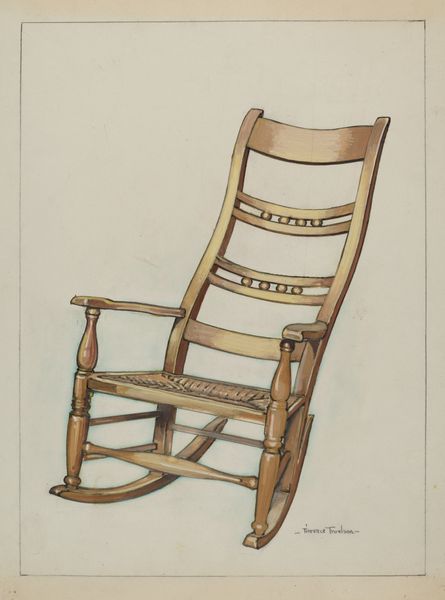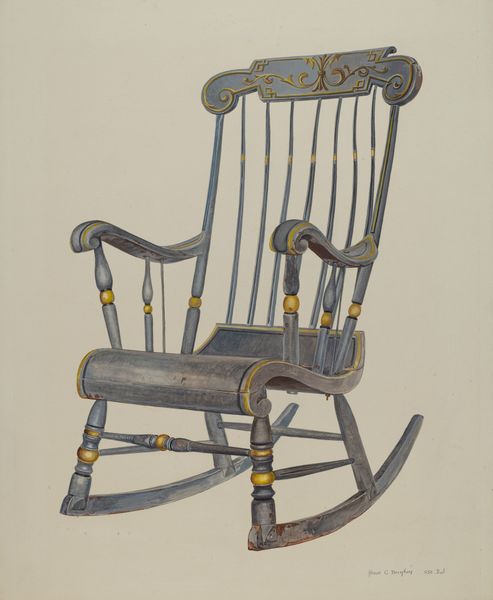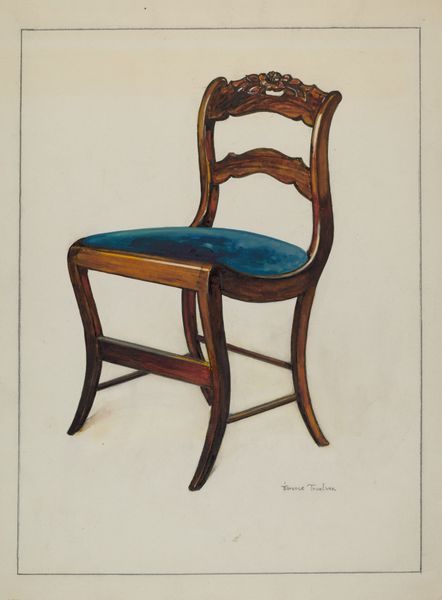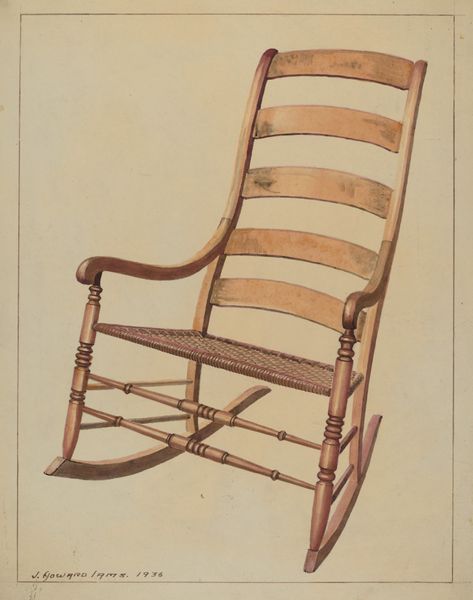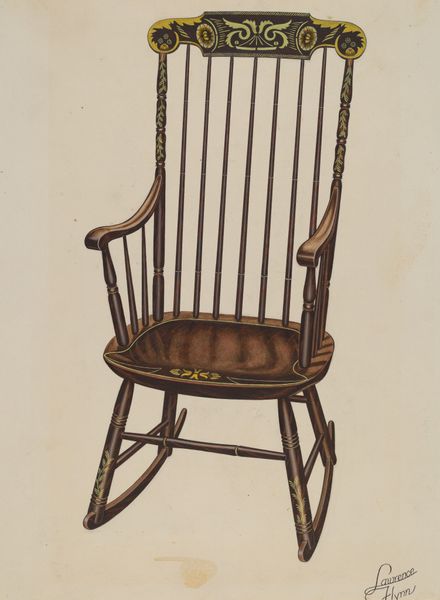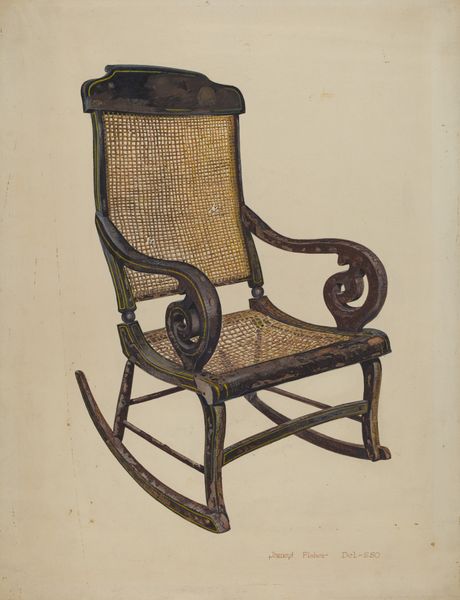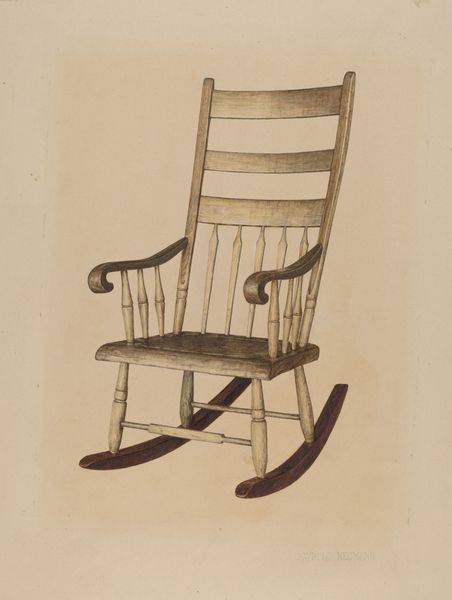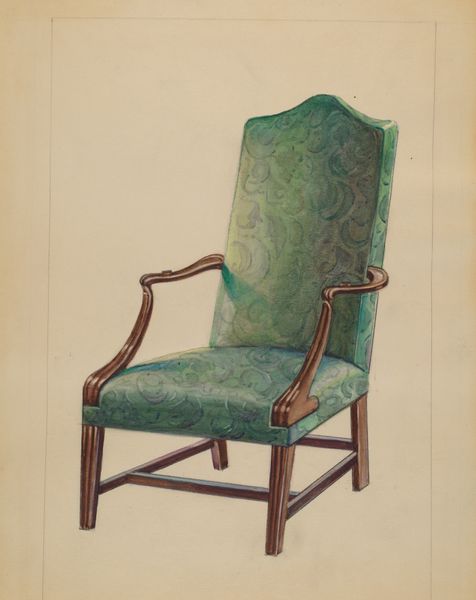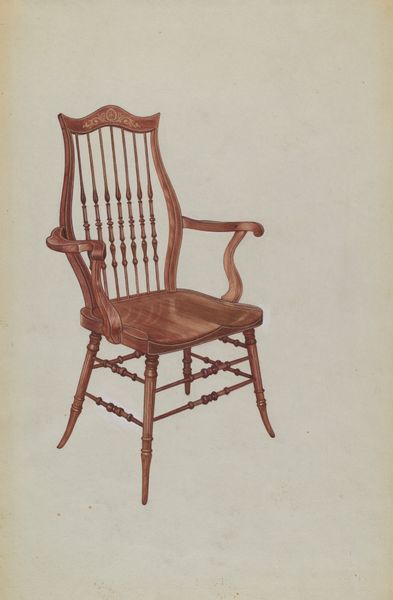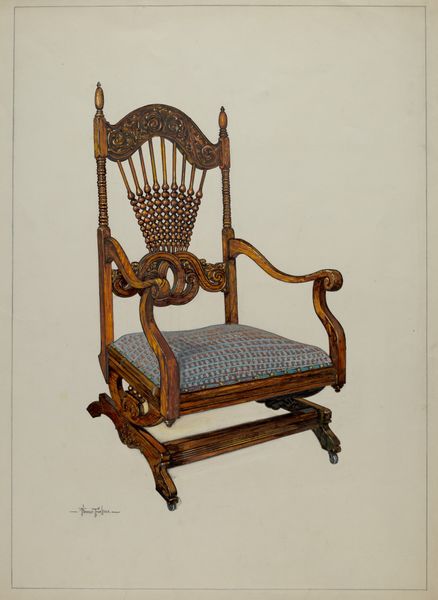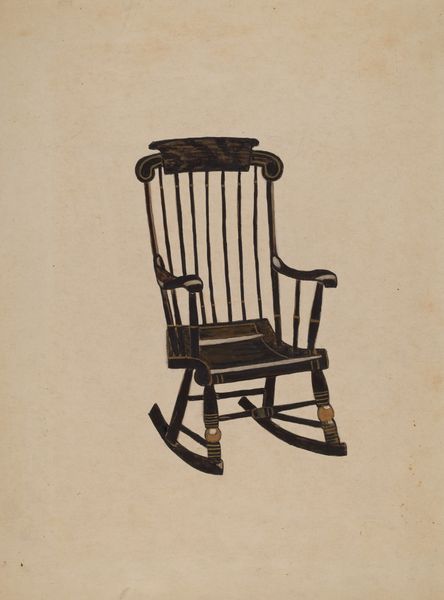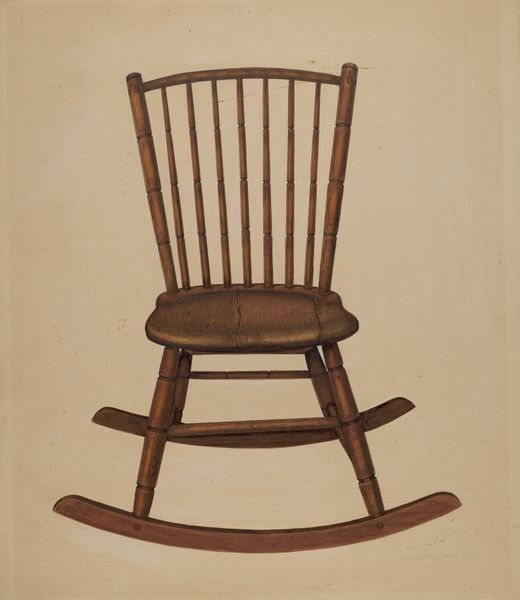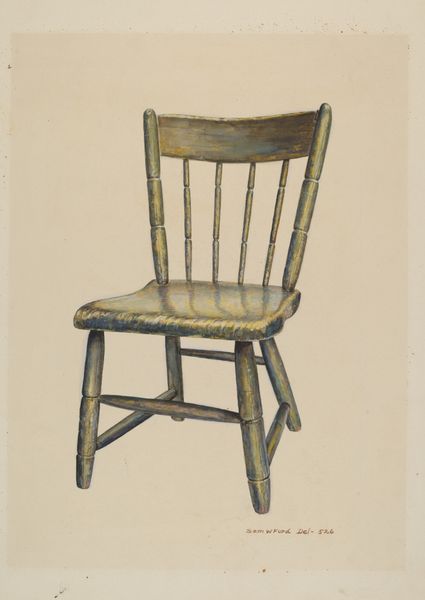
drawing, painting, watercolor
#
drawing
#
painting
#
watercolor
#
watercolour illustration
#
realism
Dimensions: overall: 35.5 x 24.4 cm (14 x 9 5/8 in.) Original IAD Object: 39 3/4"high; 21 1/2"wide at arms.
Copyright: National Gallery of Art: CC0 1.0
Editor: Here we have Florence Truelson's "Rocker with Black Horse-hair Seat," created around 1937. It's a beautiful watercolor that gives a realistic depiction of a classic piece of furniture. The smooth wood grain against the deep blue cushion... it feels so inviting. What do you see in this piece, in terms of its cultural impact? Curator: The first thing that strikes me is how this image operates within the context of the late 1930s. Think about it - the Great Depression is ending, and there’s this resurgence of interest in American identity, in representing the everyday. An object as common as a rocking chair, elevated through art. It prompts reflection on the significance of domestic life and its shifting social function. Who might have owned such a chair, and what stories might they have told while seated there? Editor: It almost romanticizes that simplicity. Was there a political statement too? Curator: Absolutely! The Regionalism movement, of which this piece is stylistically representative, actively countered European artistic dominance, embracing instead the imagery and subject matter familiar to the American heartland. It’s a political statement about valuing homegrown culture, but subtly. The choice of subject—a comforting chair—avoids overt aggression while championing a specific vision of American life. Why do you think Truelson chose watercolor specifically? Editor: Maybe for its delicate, almost nostalgic quality? It seems like a good way to reflect on what they cherished at the time. This approach gives insight to a better understanding of this time period, what they went through. Thank you. Curator: Precisely! And by considering who might have seen it— where it was displayed, and who championed it—we better grasp art's critical function as a powerful cultural voice. This was quite informative.
Comments
No comments
Be the first to comment and join the conversation on the ultimate creative platform.
